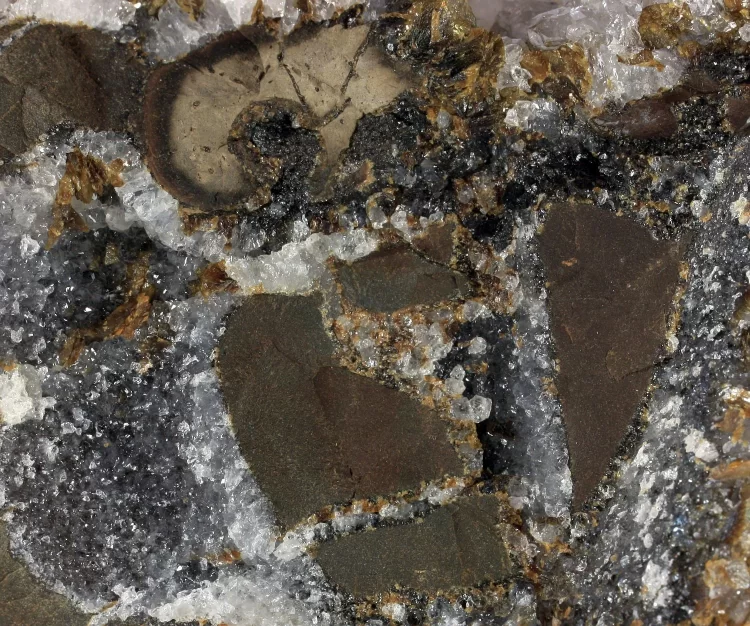Siderite is a carbonate mineral (FeCO3). It is not rare but nowhere as common carbonate as calcite (CaCO3) and dolomite (CaMg(CO3)2). Typically to carbonates, siderite also forms rhombohedral crystals. It shares the same crystal structure with calcite, but there is no solid solution between them because Ca and Fe ions are significantly different in size. There is, however, solid solution between siderite (FeCO3), rhodochrosite (MnCO3), and magnesite (MgCO3). Note that similar replacements occur in other mineral groups as well. Garnet is a good example (almandine (Fe), spessartine (Mn), and pyrope (Mg)).

Siderite is some shade of brown or brownish yellow. It is more dense (3.96) than other common carbonates because of iron content.
It occurs as an earthy mass or as concretionary nodules (clay ironstone) in iron-rich sedimentary rocks. Crystals form in hydrothermal veins and it may be found in banded iron formations from the Precambrian. Large masses of this mineral may form in hydrothermally altered limestone. It is also afraid of acids just as other carbonates, but it does not react as vigorously as calcite. It is commonly altered to iron oxides (hematite) and hydroxides (goethite). Metamorphism may oxidize it to magnetite.
Siderite is used as an iron ore in few places. It may also be used as a brown pigment.
